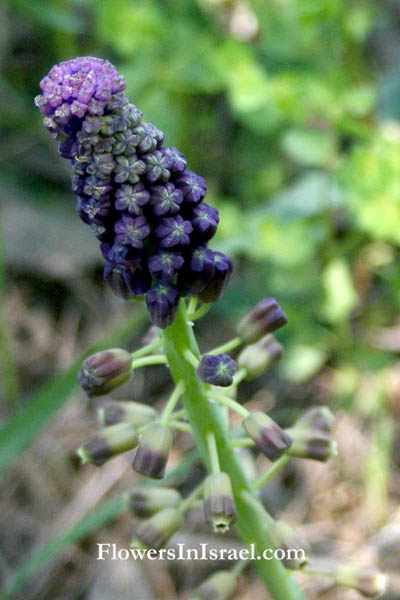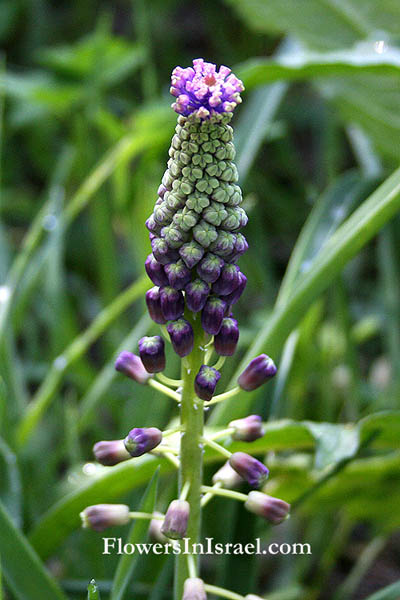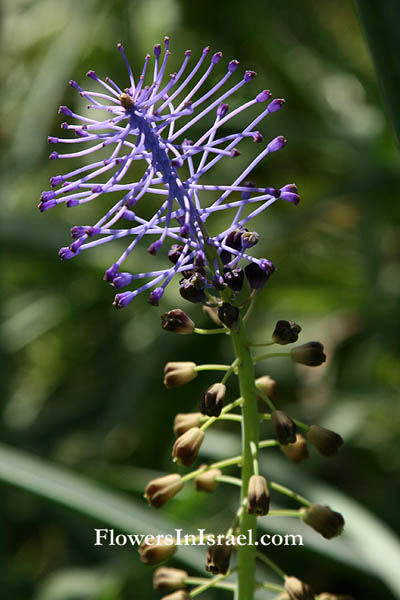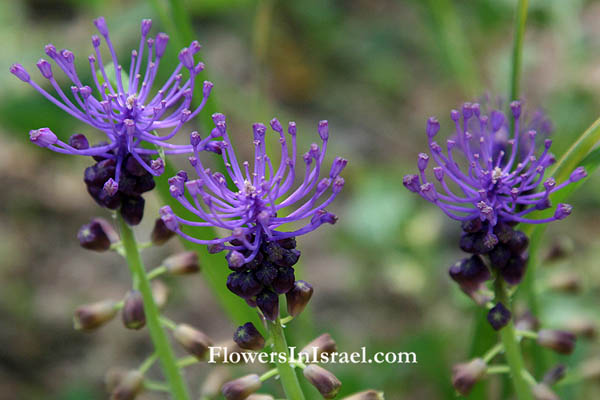Hebrew: מצילות מצוייצות, Arabic: بصل الزيز
| Scientific name: | Leopoldia comosa (L.) Parl. | |
| Synonym name: | Hyacinthus comosus L. | |
| Common name: | Purple Grape Hyacinth, Tassel Hyacinth, Tufted Grape Hyacinth, Hairy Muscari, Edible Muscari | |
| Hebrew name: | מצילות מצוייצות | |
| Arabic name: | بصل الزيز | |
| Family: | Liliaceae, שושניים |

|
| Life form: | Geophyte | |
| Stems: | Flower stem 18-35 cm high | |
| Leaves: | Rosette, simple, linear, entire margins | |
| Inflorescence: | Flowers arranged in a spike or raceme | |
| Flowers: | Cream, purple; tuft of bright violet, blue or pinkish sterile flowers at the top of the raceme | |
| Fruits / pods: | Loculicidal capsules; (bulbs reproduce offsets) | |
| Flowering Period: | February, March, April | |
| Habitat: | Batha, Phrygana | |
| Distribution: | Mediterranean Woodlands and Shrublands, Semi-steppe shrublands, Shrub-steppes, Montane vegetation of Mt. Hermon | |
| Chorotype: | Med - Irano-Turanian | |
| Summer shedding: | Ephemeral |

Derivation of the botanical name: Leopoldia, in honour of Leopold II, Grand Duke of Tuscany (1797 – 1870). comosa, with long hair growing in tufts, in Pliny, 'with many leaves'. Hyacinthus, named for Hyakinthios, a young prince of Sparta, loved by Apollo, who died after being struck on the head by a discus. The hyacinth flower sprouted where his blood fell. The Hebrew name: מצילות, mazilot, lifesaver, lifeguard.


|